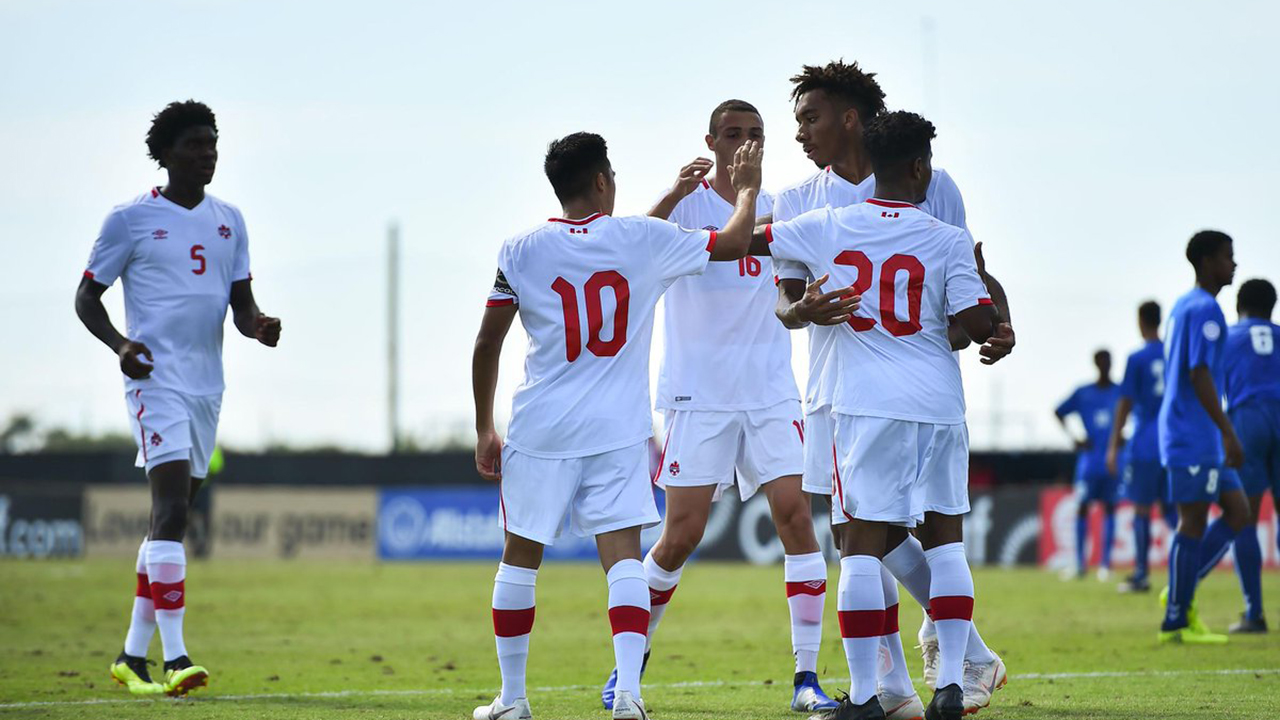The FIFA U-20 World Cup drought continues for the Canadian men’s under-20 team, who failed to progress to the final round at the Concacaf U-20 Championship.
The 2-1 loss to St. Kitts and Nevis ultimately ended their chances of progressing, but falling 2-1 to Panama left Canada in the lurch. The top team from each group advances to the second round, so losing to the Panamanians was clearly not ideal.
Canada has now failed to qualify for six U-20 World Cups in a row. The last Canadian side to participate in the tournament was in 2007 when they hosted the competition.
Here are four things we learned about Canada’s under-20 team.
No chemistry
From the outset, it was apparent that Canada lacked on-field chemistry.
Considering there weren’t any pre-tournament camps, it’s no surprise that this squad struggled to develop an understanding with one another.
In South America, it’s very common to have “minicamps” throughout the two-year cycle. Most of those camps include friendlies against other nations, which means that when the South American tournament begins, the squads have played at least 20 games together.
Of course, it’s not a foolproof method. The CSA has organized these camps in the past and still failed to qualify. Some South American countries struggle in their continental tournament as well. However, the competition is significantly stronger in CONMEBOL and it certainly builds chemistry on and off the pitch.
But even without the camps, there are many players from the same clubs. Six representatives are from Toronto FC II, four others came through the Vancouver Whitecaps Residency program together and another five were either from the Montreal Impact’s academy or played for the club’s USL affiliate, the Ottawa Fury, this past season.
Compare that to the United States, who have no more than three players from the same club, yet they easily qualified for the next stage. There were problems with the concoction of Canada’s squad, although the lack of familiarity wasn’t helpful.
No central presence
The biggest on-field issue for Canada was the centre of the pitch.
Most of Canada’s attacks were filtered down the flanks. Left-back Daniel Kinumbe and Adonijah Reid combined nicely, as did Emile Legault and one of Noah Verhoeven, Clement Bahiya or Jose Hernandez. But when the Canadians were asked to break down the opposition through the middle, it was a struggle.
Here are the passing charts from the opening two matches against Dominica and Guadeloupe. The thickness of the arrows determines the amount of passes to that player, while the size of the numbers determines how many passes the player received.
Notice Michael Baldisimo (No. 4) is very involved in the buildup.
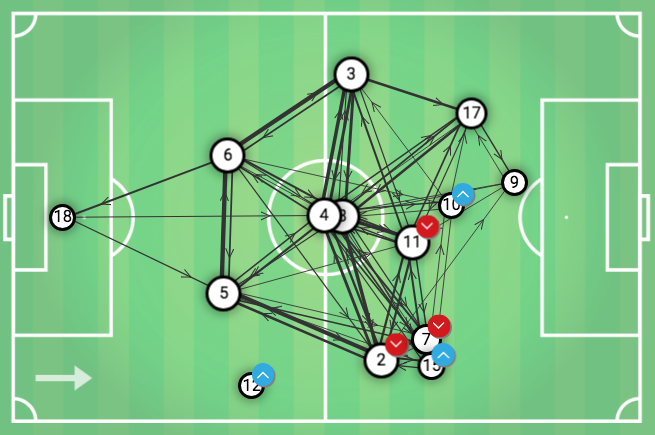
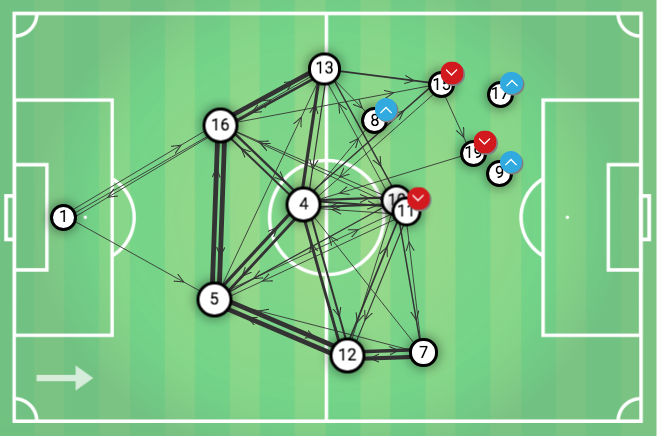
Canada won the possession battle against Panama – even with 10 men – but struggled to control the game. After Baldisimo’s red card, numerous passing sequences broke down in the middle of the pitch because there was no calming deep-lying playmaker to dictate the tempo.

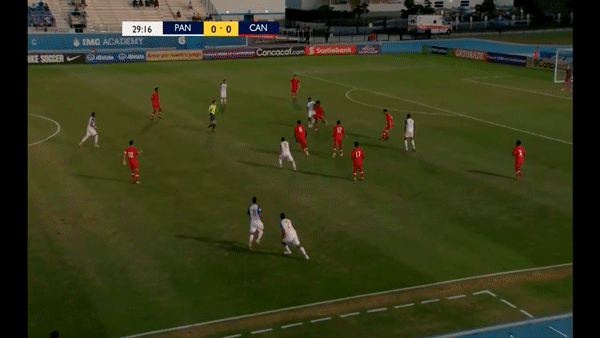

Benson Fazili replaced Baldisimo in the 2-1 loss to St. Kitts & Nevis and the ball circulation improved, but there was no semblance of an organized shape, which St. Kitts recognized and pressed the Canadians more often.
When Canada did break through the lines, they were foiled by the deep block from the opposition. Canadian coach Andrew Olivieri pinpointed that issue after the defeat to St. Kitts & Nevis.
“It’s just recognizing the moments where you need to be moving off the ball and getting in behind and runners that can provide options deep and options off the front,” Olivieri explained. “It just allows us to move the ball and break down a tough block because it was a tough block today. Without that movement, we played right into their hands.”
@Concacaf Men's Under-20 Championship #CU20 post-match reaction from #canm20 Andrew Olivieri pic.twitter.com/RYBaJtoFi9
— Canada Soccer (@CanadaSoccerEN) November 9, 2018
This, more than anything else, cost Canada in Group D.
Lack of chance creation
A byproduct of the scarcity of buildup through the middle was an absence of chance creation.
This wasn’t as concerning in the 4-0 win over Dominica as Canada produced 30 shots. The next four games conjured up a combined 34 attempts. The opponents were more incisive on the ball and pressured the Canadian players in possession, which troubled Les Rouges.
Canada also did not have an out-and-out No. 10. Noah Verhoeven occupied that role at times, but most of his passes in the final third, or into the box, were generated from the wing. It makes sense, seeing as how he’s best suited out wide.

Steffen Yeates, who has been deployed as a No. 10 for Toronto FC II, would’ve been perfect in this system. But alas, he only started the final match against Martinique.
No advanced playmaker meant it was easy to stifle Canada’s attacks. Since they preferred to exploit the flanks, as long as the opposing defenders cleared the crosses, there was no real threat.
Canada scored 10 goals from 64 shots, but considering the quality of the opposition, the attack should’ve been far more effective.
The Michael Baldisimo Show
Even though Canada exited early, there are a few players worth monitoring over the next couple of years.
Michael Baldisimo – red card versus Panama aside – is chief among them.
Baldisimo was one of the main standouts for Canada, even though he only made three appearances. He completed 155 of his 176 passes (88 per cent) in the tournament and was one of the few players who coped with the opposition’s pressing.
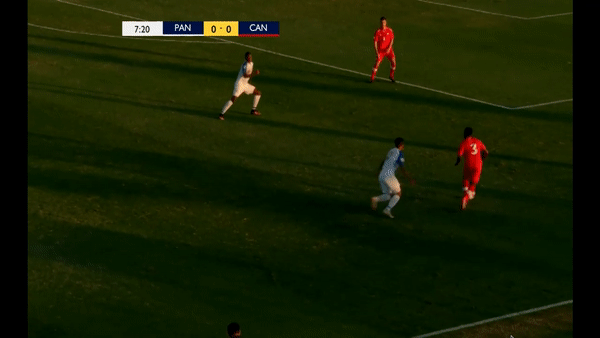
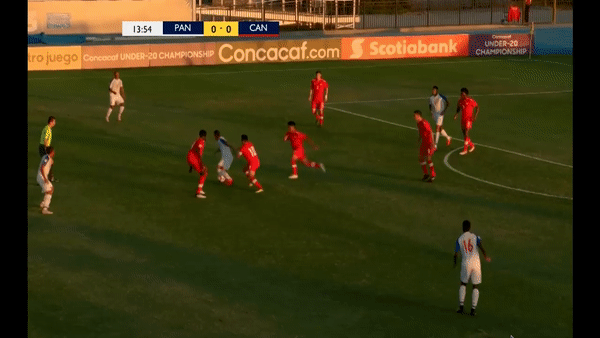
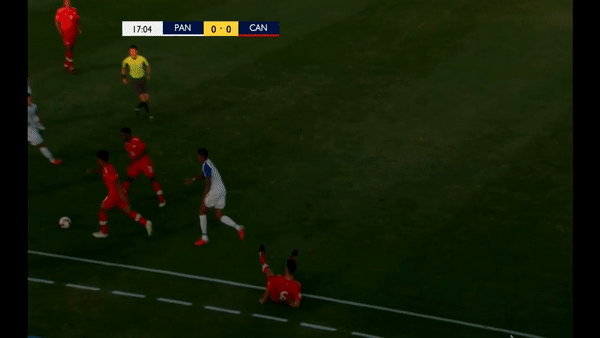

It’s not like he just passes the ball sideways or backwards, either. Baldisimo is a calm orchestrator who can pick out the line-splitting passes that appear inconceivable.
Michael Baldisimo with the through ball, and Theo Bair with the finish
The #VWFC Homegrown connection rounds out a 4-0 #CanM20 win pic.twitter.com/gxzHrfzI6c
— Whitecaps FC Academy (@WFCAcademy) November 3, 2018
A classic pinpoint Baldy Bomb #CanM20 pic.twitter.com/hcbMpaNQ25
— Whitecaps FC Academy (@WFCAcademy) November 2, 2018
The Vancouver Whitecaps midfielder possesses tremendous awareness and anticipation, so he’s able to win possession cleanly and quickly transition the play forward as well.

Baldisimo averaged around eight interceptions and slightly under 10 recoveries per game. Because of his strong work rate, he tends to cover a lot of ground.

It would be shocking if Whitecaps coach Marc dos Santos does not give Baldisimo a consistent run of games in the Whitecaps first team in 2019. That is the 18-year-old’s next step and he appears ready for it.
[relatedlinks]

